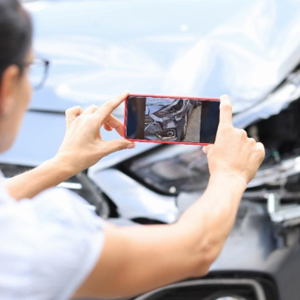
Diminished value is the term essentially used to denote cars that have been repaired after being involved in an accident yet were not totaled. Because of the damage incurred, these cars are perceived differently by the market, and understandably so. To illustrate, if you have two identical cars — one that has been in a wreck and repaired and the other that hasn’t — potential buyers are likely to pay more for the car that hasn’t been involved in an accident.
Diminished value is the quantifiable difference between the pre-accident value of your car and its post-repair value. You are probably seeing how navigating property damage in an auto accident claim is a bit more involved than what you may have assumed!
Only once the repairs are completed and paid for can an assessment for diminished value be conducted. Calculating diminished value doesn’t have a standardized approach, as each insurance company may handle things differently. Although there’s no jury instruction or formula, seeking compensation for diminished value is possible.
In our practice, we’ve had success assisting clients with diminished value claims. We collaborate with a specialized diminished value company that reviews pictures of your repaired car, the repair estimate, and the impact the car sustained during the accident. They then prepare a report with expert opinions that serves as a starting point for negotiations with the insurance company.
This approach has meant countless clients received significant compensation, often in the thousands of dollars they otherwise wouldn’t have received, without resorting to court action. In cases where court action is necessary, the diminished value company we work with is prepared to provide testimony nationwide. They are invaluable in helping us and our clients navigate the complex process of determining the worth of a diminished value claim.
If an issue arises after repairs to your vehicle are made, the first step is to determine whether the problem is related to the repairs from the car accident. Once it is established that the issue is indeed linked to the repairs, the next course of action is to return the vehicle to the shop that performed the repairs for further evaluation and to address the necessary fixes.
Choosing an in-network or preferred shop with the insurance company that covers the claim, particularly the at-fault insurance company, will likely turn out to be of tremendous benefit in these situations. These shops often have an established relationship with the insurance company, making it easier to address any post-repair issues. Returning the vehicle to a preferred shop can streamline the process of getting the necessary repairs covered by the responsible insurance company, providing a convenient and efficient solution.
If the insurance company denies your property claim and denies that their insured party is at fault, we file a lawsuit. Filing a lawsuit is a powerful tool that attorneys have at their disposal. In such situations, the discussion may revolve around initiating legal proceedings. However, it’s often strategic to avoid filing a property damage lawsuit until the bodily injury claim is also ready to be presented in full.
Our rationale here is to avoid filing a lawsuit solely for property damage, only to have it set for trial before the injured party has completed their treatment. Filing both the property damage and bodily injury claims together allows for a comprehensive presentation of evidence, damages, and the request for compensation from a jury. Lawsuits are typically filed after the injured party has concluded their treatment and achieved a certain level of recovery.
The law does not require insurance companies to provide a reason for denying a claim. However, it’s common for adjusters to document their files and communicate the reason for denial. Typically, an adjuster will specify the contractual language or the specific reason for their investigation of liability when informing about the denial of a claim. While it may not be a legal requirement, providing a rationale for denial is often done to maintain transparency and facilitate communication between the parties involved.
Your own insurance company can assist you throughout the auto accident claim process, especially if you have collision coverage or full coverage. Starting with your own insurance can expedite the process, and they can pursue reimbursement from the at-fault party on your behalf. Opting to use your own insurance can get you back on the road more quickly, particularly if the at-fault party’s insurance is causing delays.
While some clients prefer dealing exclusively with the at-fault party’s insurance, utilizing your own coverage, if available, is a viable option. In any case, whether you choose to work with your insurance or the at-fault party’s insurance, a skilled attorney can help coordinate and navigate the process for you.
For more information on Property Damage In An Auto Accident Claim, an initial consultation is your next best step. Get the information and legal answers you are seeking by calling (479) 337-7077 today.